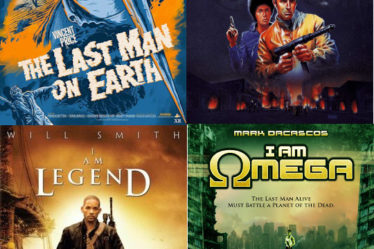
WARNING: This Review Contains Spoilers
Nirami, Tokyo. A murdered family leads to a cursed home. In 2002, Takashi Shimizu brought us the third instalment of his Ju-On series with The Grudge. It is interesting that in 2004, it is this film he chooses to remake instead of starting from the beginning. Was it the right choice? We’ll see.
In The Beginning
Firstly, I would like to point out that I completely understand why Shimizu may have felt he needed to change the opening sequence. The original opening has a grittiness to it and some may find it uncomfortable to watch. Also, as he is remaking the third film of his original tale – it may come across as a little confusing – being a snippet of the goings on in the first film. However, it is still explained later on in the film so if I’m honest, you do not have to watch the first two for it to make sense (I am going to find time to do so, though).
The opening of the remake, some may also find a little discomforting as it is not clear why this scene happens and I know that suicide is an uncomfortable subject for many of us. I will admit though it does set you up for a bit of a shock. It is a shame, however, the rest of the film does not quite follow suit.
The Structure
Understandably, the storyline of both films is very similar just with a few changes. However, the chronology of each film is very different in my opinion. Takashi Shimizu has stated that they are both anachronistic in style, but I do feel this is made more obvious with the original film. Especially as, unlike its American counterpart, the film is broken up into different parts, telling each characters story. This, therefore, reminds us that Rika is just a piece in a much larger puzzle instead of being styled as a leading character – much like Karen is in the remake.
Questionable Changes
As mentioned previously, we are introduced at the start to characters Peter and his wife Maria. Their story takes the place of that of Izumi in the original film. As part of this change, it is brought to light why Takeo kills Kayako which is not explained in Ju-On: The Grudge. I understand now that this would be because it is not actually the first film in the original set, so maybe Shimizu has tried to put all the films before 2002 into the 2004 remake but I will need to watch Ju-On: The Curse to be certain of this.
Also, in the removal of the Izumi style story from the film (which I have since discovered has actually been moved to The Grudge 2 in 2006), has taken away the introduction of a policeman (Izumi’s father) who worked on the Saeko case – the point at which the trouble started. His parts of the tale are still told, but through Karen and Detective Nakagawa. For example, it is Izumi’s father that has the vision of the future when he heads to the house to burn it down whereas in the remake, Karen sees into the past and why Peter throws himself from the balcony at the start.
In addition to this, the sibling element from Ju-on is replaced by a boyfriend. As we see in the original film, Rika is comforted and looked after in hospital by her sister Mariko. Yes, Karen does have a sister but audiences will not meet her until the second film. Instead she lives with and is looked after by her boyfriend Doug. For me, this plays into the idea of making Karen more of a lead character along with her investigating exactly what has been going on, as it causes her to become the hero of the story when she tries to save him from Kayako at the end.
The Ending
Something I actually quite like about the original, is the fact that no one survives to the end. This is also the reason why I was disappointed with the 2004 version as Karen survives where Rika does not. Some would say that Shimizu did this in order to make The Grudge 2 in 2006 – however, he had already made a sequel film to Ju-On: The Grudge, with the house being to connecting piece which would not be possible as Karen burns it down. This being the case, I have actually found myself more interested in watching the Japanese sequel rather than the American.
In Conclusion
In case it has not become obvious by reading through the above, I feel that unfortunately Shimizu should have left Ju-On alone. I understand that he may have felt he needed to bring his tale to an English speaking audience, but I feel he could have done so without changing too much.


